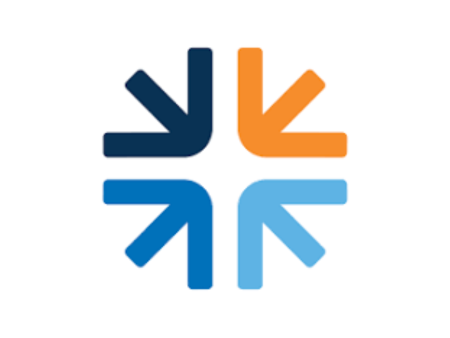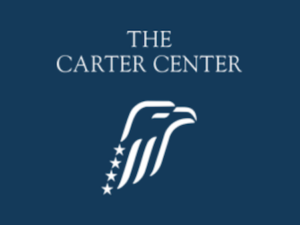The Financial Health Network connects business leaders, policymakers, and innovators with the data and resources they need to improve the financial health of their customers, employees, and communities. They are working to change norms around how corporate America understands that supporting good financial health for their stakeholders is also good for their business.
Jennifer Tescher of Financial Health Network spoke with Allen Arthur on February 21, 2024. Click here to read the full interview with insights highlighted.
Allen Arthur: Can you start by introducing yourself, the problem you’re working to respond to, and the general way that you are responding to it?
Jennifer Tescher: I’m Jennifer Tescher. I’m the founder and CEO of the Financial Health Network. This year is our 20th anniversary, and our mission is to improve financial health for all. We do that primarily by working with the private sector to get them to understand the financial health challenges of their workers, their customers, and their communities; then, we help them develop strategies and solutions to improve it. Essentially, we are trying to change mental models and norms about corporate America’s understanding of their role and responsibilities around how good financial health for their stakeholders is generally good for their business.
Allen Arthur: Who are the main people that you want to serve, and how are they benefiting from your work?
Jennifer Tescher: We are particularly focused on those who are the least financially healthy, so to use our language, those who are financially coping and vulnerable — especially those who have been historically and systemically left out. Financial health is inequitably distributed. Part of our mission and work is to address that not just at the individual level, but also at the systems change level. We’re an indirect service in that we don’t work with any end users, but we know a lot about them.
Allen Arthur: What about that approach is distinctive relative to the approach of others, maybe from those working in the financial health space?
Jennifer Tescher: We work not exclusively, but primarily, with the private sector. We don’t just work with them from an advocacy perspective, but we work with them to change their own practices. We also engage with regulators, particularly in the financial services sector, and with nonprofit organizations doing direct service work.
We have helped build an ecosystem, a network of companies and organizations that are focused on and care about financial health because there is no one silver bullet, no one solution, one policy, or one company that can fix this. Our approach has been to change the conversation.
The concept of financial health didn’t exist before. We named it, defined it, and started measuring it. Now, there’s a community and a set of practices around it. That’s one thing that’s unique about us.
I think our second unique quality is that we speak multiple languages. What I mean by that is we can speak to all actors in the ecosystem, and we often serve as a safe space for people with different points of view to come together. We can help groups and parties understand one another and, most importantly, we have a deep understanding and insight into the real financial lives of real people, so everything we do is infused with that. In many ways, we’re helping expose all comers to the, “Here’s what’s really going on with the people you engage with.” It’s ultimately all about them.
Allen Arthur: Can you tell me more about the process of bringing people together who normally do not interact in this sphere of financial health?
Jennifer Tescher: I should give a little bit of history first because when we started 20 years ago, we were called the Center for Financial Services Innovation, and we were founded to answer the question of: How can technological changes in financial services benefit those who need it most?
We were the people who put the “un-” and “under-banked” on the map in the United States, and we were focused on access, primarily with financial services companies. This was 2004, so the iPhone didn’t exist. Google had just gone public, and fintech didn’t even exist yet.
For the first 10 years, we were about preaching to anyone who would listen: “Hey, there are these people out there. Some of them are your current customers and you’re not serving them well. That’s a missed opportunity for you, let alone a problem for them.” When the iPhone was invented, that access problem was taken care of. Then we had the financial crisis, and we saw that maybe those bank accounts and mortgages we were encouraging people to take out weren’t so good for them. Then it was the Great Recession, and we saw that this isn’t just an un- and under-banked problem; this is the majority of Americans who are struggling financially. We’d all missed it.
We’d been gathering the wrong data. The government was gathering the wrong data. We didn’t see it coming, even though it had been decades in the making. It was that moment when we realized we weren’t just about access or inclusion or bank accounts. We were about trying to improve people’s lives.
We had just come out of the field with some cutting-edge research. We had followed 200 families in four communities over the course of a year, documenting every dollar that flowed in and out of their house and the decisions and choices they made. We had come out of the field with this data during the Great Recession, and we were trying to make sense of it. We realized that when people talk about their financial lives, they’re really just talking about their lives. They’re one and the same. So we said, “If we really want to improve people’s lives, let’s focus on their financial lives because that’s what we know how to do. We think that should be called financial health.”
Ever since, we’ve been focused on defining what financial health looks like — creating a framework and a measurement methodology around it — and starting to measure it at a national level year after year. We’ve done some measurement work in local communities as well, helping people to see what we were seeing in the same way we were seeing it.
About five years into that journey, we realized that if we really want to move the needle on financial health, we’re going to have to start engaging beyond financial services because they’re only part of the issue. They can only do so much. We started thinking about the other actors that have an outsize role in people’s financial lives. In this country, healthcare unfortunately plays a big role financially. Same thing with higher ed and housing. Your job plays a really big role, so we decided to focus on employers to start. Now, we work with employers across sectors who are focused on the financial health and wellness of their workforce.
What started as a network of financial services providers, banks, credit unions, fintechs, vendors, regulators, and nonprofit providers expanded to a broader set of companies and organizations who came to appreciate financial health as it related to their other stakeholders, to their workers in their communities. Now, we’re focused on helping everyone understand that financial health is a critical element of whatever it is they’re doing. Within the sectors I mentioned, and in other places, if we’re not addressing people’s financial lives and financial needs, we’re often not going to be successful in helping them with whatever other issue they’ve brought to the table.
Allen Arthur: Can you share an example of what success in your world looks like? Maybe a particular initiative or project? Something that you would say is a model of what success looks like in this work.
Jennifer Tescher: Early on, we developed a relationship with Dan Schulman, who is the former CEO of PayPal. We got to know him when he was at American Express. We tend to think of American Express as a fancy brand, but he was there trying to build products and experiences for not fancy people, for the rest of us.
When he went to PayPal, he changed the mission of that company to be about financial health, and he embedded it from top to bottom. He started focusing on a new offering they were creating, which was meant to be more like a basic banking account, not just a way to send money. Dan Schulman became the poster child for financial health.
He came to learn that his employees were not so financially healthy. PayPal surveyed and measured their workers, and they looked at how much money they had left over after they paid all their bills and key expenses, and it was really low. It was 4% net disposable income. After that, he got religious about the importance of financial health in the workforce. He led an initiative where they offered a whole new set of benefits.
They set a goal of getting it up to 20%, and they made some immediate changes. They changed the way they allocated healthcare benefits internally to dramatically reduce the cost for their lowest-paid employees. They gave grants of stock to everybody, not just to the higher earners. They offered access system financial coaching. They did a variety of things. The last time I checked, they were up to 16%.
As if that wasn’t enough, Dan went on to become a champion with other CEOs, and started working together with JUST Capital, the Good Jobs Institute and us. The goal was to get worker financial wellness to the top of CEOs’ agendas. We recruited over a dozen CEOs of large companies to participate by assessing the financial health of their workers or assessing how they were faring as it related to a living wage. Over one million workers benefited from pay increases or improved benefits as a result of that initiative. In a way, that tells our entire story of financial wellness, and how you go from one company to many companies.
Allen Arthur: How do you, across the organization and across all your work, measure success? Where do you see the evidence that you’re making some progress?
Jennifer Tescher: Originally, we thought about measuring our success based on improved financial health nationally, but there are so many macroeconomic factors that feed into that, that those numbers, while they do change and we do track them over time, are not tremendously sensitive. No one organization can parse out their impact from a macroeconomic impact, good or bad. As a B2B [business-to-business] organization, we think about it in terms of having changed the conversation. We spend significant time thinking about not only media citations, eyeballs, and that sort of thing, but seeing what we’re talking about, what we care about, and what we’re pushing, coming out of other people’s mouths.
For instance, we built a relationship with the acting comptroller of the currency, essentially the regulator of all the biggest banks in this country. Now, in his speeches, he’s talking about financial health, and he’s getting ready to put out a set of potential metrics for banks to look at.
We also look at the number of companies we’re working with over time. We’ve worked with over 500 organizations and are growing. We look at the solutions that we’ve catalyzed, whether that’s a new product, a new business model, or a new construct. For instance, a few years ago, we worked with J.D. Power to create a financial health certification program for the top 23 banks. That’s now another tool that lives outside of us, but that we helped to write the rules for.
Then we look at specific initiatives, the number of people we’re serving indirectly, and the kinds of changes that we’re experiencing. For instance, I mentioned the Worker Financial Wellness Initiative. We know that over a million employees have benefited from that. We’ve been a long-time investor in early-stage fintech companies, most recently through an accelerator. The 50-plus companies that we invested in have served over 33 million people with accounts, credit, savings, and planning tools. It makes it hard to roll up to just one number or even three numbers because in a way, we’re about building a broader ecosystem and trying to influence the direction of that ecosystem, and the norms of those industries, beyond the individual company level. When you’re an HR expert, what is the norm in thinking about the needs of your workers? What is the norm for a product manager within a bank when thinking about how to design and deliver a financial product that’s going to benefit people’s financial health? That’s the influence we’re trying to have.
Allen Arthur: You’re saying one of the things you do is invest in products that will help people with their finances. So if, hypothetically, I started an app that was going to help people who are struggling with their financial health, for various reasons, by addressing one of the obstacles that they’re facing, your organization would conceivably support that financially?
Jennifer Tescher: That’s right. At the moment, we are not investing, but for most of our history, we have.
For example, 10 years ago, we invested in a company called Digit. Digit was a savings app. It essentially used an algorithm to look for the loose change in the cushions of your bank account. It looked at how much money you could take out of your account, even if it was just 50 cents, that you wouldn’t miss and that wouldn’t hurt your ability to pay your bills.
We wanted to do it in a fun and interesting way, via text, with humor. This doesn’t sound novel right now, but 10 years ago, this was quite novel. They were hugely successful, and they ultimately got bought by another company that we had invested in and that had gone public and wanted to add a savings feature to its credit products.
Since Digit, we’ve seen lots of examples of new savings apps. We invested in another company about 10 years ago called Propel. Propel originally thought they were going to digitize the application for food stamps because when people are standing in the office to apply for food stamps, what are they doing? They’re on their phones. But after realizing the bureaucratic and governmental hurdles, they shifted their focus to helping people understand how much money they have left in their food stamps account because the only way to do that was by calling a 1-800 number. They wanted to make it more accessible. From there, they’ve built a whole range of products, tools, and services for people who are primarily that demographic, people who would qualify for food stamps. They’ve served millions of people. They’re helping people stretch their food stamp dollars further. They’re helping them find access to work. They are also helping them gain access to products and tools at a cheaper price than they might get otherwise, that they may not realize they qualify for.
Allen Arthur: What are the obstacles and challenges? Is there anything that you’ve tried that didn’t work, or that you learned an important lesson around that would be valuable to others doing social change work?
Jennifer Tescher: Originally, when we started measuring financial health, our theory was that if we got more and more companies to measure the financial health of their customers, over time, we could start benchmarking those companies based on how good a job they did. That would create a natural competitive dynamic, a race to the top, if you will.
There were a number of ways in which that didn’t come to pass. We’ve worked really hard to get companies to measure and assess via surveys, and well over 100 have done so either on a one-time basis or they’re continuing to do so, but we’re not going to get every company to measure via survey. It’s eight questions, but we’re not going to get everyone to do it.
Moreover, there are so many macroeconomic factors that can impact someone’s financial health that a lot of companies are afraid that if we’re going to use the data for that purpose, they’ll get blamed for things that aren’t their doing, or that they’re not responsible for.
We’re approaching that in a couple of ways. One is that we and others are now working to develop a set of indicators and metrics for measuring financial health that you can derive from a company’s own transactional and administrative data. Then, they can very quickly and easily assess the state of any customer’s or worker’s financial health, not just those who answered the survey, based on data they already have. They can do that at any time, and they can use that data to hold themselves accountable over time.
What do I mean by that? I’ll use an example that we’ve talked about a lot in this country: How do we get more people to save for retirement and sign up for a 401(k), let alone put money into it? A lot of employers have made great strides in doing that, and a lot of employers look regularly at that metric of participation, or the amount being saved. A lot of employers also look at the amount being taken out for emergency loans. Imagine doing that for a range of financial health indicators. For us, financial health is about spending, saving, borrowing and planning. Our survey indicators are based on those four things.
You could imagine, for instance, a bank using its own data on people’s savings accounts to measure how their customers are doing. Then, if they were to create a new initiative around encouraging more savings, or a new product feature, or a new tweak, they could test and learn and see whether it makes any difference. This is also a data point that they might be able to share or use as part of their quarterly earnings report. These are things we’re starting to see in their annual reports. So for us, this is really about asking: What’s the right incentive to drive action? We think that measurement is key to that because what gets measured gets managed.
Allen Arthur: Are there any challenges, limitations, or obstacles that you’re currently facing that you just haven’t been able to crack yet?
Jennifer Tescher: I can share two very different examples. The first is a theory we had that once J.D. Power created that certification program, it would create a race to the top. It turns out that one institution has now been certified multiple times, and other institutions feel like that single institution has leveraged financial health as a differentiator, and no other banks can now leverage that differentiator. I’m not sure I fully buy that, because banks are usually like lemmings, and whatever the one is doing the others will ultimately do.
We wanted to leverage that idea, and it may turn out to be that certification is not the issue. Being able to say, “Hey, J.D. Power says I’m doing awesome at this” may not be the most effective lever. We’re actively thinking about what that right lever might be.
It may be benchmarking because most institutions that compete against each other want to know what the other is doing, how they’re doing, and how they’re doing against those institutions. Right now, that data is not available to them. So that may be the solution, but we’re early in trying to figure that out.
Then completely separately, when we realized that we couldn’t just work with financial services companies, we decided to work with some others. We worked with employers, we did a bit of work in the healthcare world, and we did some work in higher ed. We got experience working with other folks trying to solve other problems. Our assumption was that we could take exactly what we had been doing with banks and financial services companies and just port it over, and all that needed to change was the last mile, the language we used.
That’s because ultimately, these are the same human beings facing the same set of issues, but it turns out that it’s more complicated than that. While we have produced a lot of excellent content for employers and HR professionals, and worked with a number of companies, and our work has gained some significant awareness, we haven’t yet figured out as an organization what the most effective go-to-market strategy is. When we work with banks, we’re largely working with profit centers, but HR is a cost center, and that creates different opportunities and challenges when thinking about how to engage.
I think it’s also important to note that while we derive a significant amount of our funding from foundations, we also earn revenue through a membership network, through consulting, and through a conference. It’s always been important to us that, if we were working with the private sector, they have their own skin in the game because if they don’t, then what we’re doing isn’t working. They have to believe that this is worth paying for in some way. We haven’t fully cracked the nut on that yet.
Allen Arthur: Do you perceive your work as advancing systems-level change?
Jennifer Tescher: We’re certainly trying to inspire change at the company or organization level, but we’re also trying to change norms and expectations at an industry level. I would consider the way an industry works a system, but I know when they talk about systems-level change, a lot of people are talking about policy change.
Policy change is super critical, super important. We do some of that, particularly as it relates to regulation. So when I say industry-level change and systems-level change, if everyone in the financial services world understands that measuring the financial health of your customers is just the thing you do — and companies like J.D. Power springs up to help you do that — then that becomes the way business is done. If this is the kind of information that gets reported on your quarterly earnings report, then it’s a norm and an expectation that has changed.
I could say the same thing with employers, writ large. What’s the expectation of the role of an HR executive or CEO in thinking about their responsibility to their workforce? When we think about quality jobs, do we understand that this also includes broader support for people’s financial lives? I think there are times in our work when there’s a very specific policy change that is very helpful, like SECURE 2.0 in the retirement arena. It created rules and guidance for employers to be able to not only help people with their retirement savings, but also help them with short-term emergency savings. This was work that we had been doing for years with companies indirectly, but they needed more clarity that it was an okay practice legally.
One of the biggest challenges for us, and a lot of other people who do work like this, is that there are enormous systemic challenges, like the ever-increasing cost of healthcare, or the ever-increasing cost of a college degree. The growing levels of inequality, both racially and writ large, are creating such pressure that I think it’s fair to say that some of the work we do is ultimately a bandaid. What can we do for people right now until some of these larger forces ultimately change?
We just created a new strategic plan, and as part of that process, we went back and looked at our vision and mission, like any organization would do. We made an important change to our vision, in which we talked about and made the connection between financial health and the health of both our economy and our democracy. It was our way of making a nod toward some of the bigger issues we face in our society that we, as an organization, aren’t equipped to tackle, but others are.
It’s really important that we find ways to support their work and help them understand empirically the connection between people’s financial health and people being civic-minded, and how that relates to people feeling like they should vote, and people feeling the need to protect democracy. We’ve recognized that financial health is related to everything, and there’s only so much we can do as an organization. We need to equip other organizations that are fighting some of the other fights that are going to be so critical to helping improve financial health in America, so that we can all together be successful.
Allen Arthur: There’s no one company, and no one organization, that can do it all on their own, which is very important to be candid about in solutions reporting. I’m wondering, then, what do you think is most needed from other actors or partners in this space to further advance this change?
Jennifer Tescher: We have to tackle inequality. It’s pulling our entire society apart, and there’s a very significant and severe racial component to that. There’s also just an intense concentration of wealth at the very top of the pyramid that’s distorting everything. Some of our stakeholders have a role to play in that. The financial industry has a role to play in that. All of our stakeholders have the opportunity to advocate with their own lobbying dollars for these kinds of solutions. But we’re not talking about tax policy or reparations, and [those issues represent] the scale at which these deep-seated problems need to be addressed.
Allen Arthur: What lessons have you learned from this work that you would share with someone who wants to replicate what you’ve done? What might you share with people involved in this space somewhere else?
Jennifer Tescher: It’s interesting that you mentioned international because while our mission is focused on the United States, we have engaged with the global financial inclusion community over the years. In the last few years, we’ve worked very closely with Queen Máxima of the Netherlands, who is the UN Secretary-General’s Special Advocate for Financial Inclusion, and she’s become a champion for financial health globally. It’s been really exciting to see the financial inclusion community, writ large, think about how, thanks to technology, billions of people have been included in the last five to 10 years, who weren’t before. Now that they’re included, now what? Are they actually using it? Are their lives any better?
In a way, financial health is about getting organizations to think about outcomes, to care about outcomes. It’s not enough to say we opened a bunch of bank accounts or look, we gave people a bunch of mortgages. We need to own some of that as the company is involved. It’s not like you’re just selling dog food off the shelf and, great, that’s a success. Is the dog any healthier?
We’re a tiny, little organization trying to change multi-trillion dollar systems. That takes a long time. This is a very long game. We live in a world where we have very short attention spans, whether it’s funders, the media, or companies themselves. That’s just the nature of it. But I do think that the more one can create intermediate milestones along the way to declaring success or, frankly, to pivot if something is not working, is really important, both to sustain morale within the organization and to be able to demonstrate progress, even if the ultimate goal is still a ways away.
Allen Arthur: How do you see this work unfolding over the next five years or so?
Jennifer Tescher: We are driving more towards standards. What I mean by that is in the beginning, the question was: Who are these people you want us to work with? Why should we care? Then it was: What’s financial health? Then: What’s the business case? It eventually became: Now what do you want me to do? Now, it’s: How do I do that? Even more recently, it’s: Just tell me the answer. Just give me the playbook.
We think it’s time. Folks are ready now for standards that make it clear, at a minimum, what the baseline is. Here’s what it looks like to do it well, and here’s the playbook. That’s one thing we’re driving towards to help move progress more quickly. Institutions are different. They serve different people. They have different goals. They may need to do things differently, but giving them one playbook I think will be helpful.
Technology marches on. We started as an organization focused on how to leverage technology, and I think we will continue with that focus because it makes the business case, in many instances, easier when you can reduce the cost to serve. We’re thinking a lot about AI, particularly how AI can be leveraged for greater financial advice for people who can’t afford the high-end financial planner.
Through everything we do, we’ve got to make more progress on equity. Right now, your identity has a very significant role in determining the state of your financial health, and that’s just not right. That’s not just. We don’t think that outcomes should be equal for everybody, but we think that your identity shouldn’t dictate your financial health status. There’s more that we all need to do together to interrogate our systems, interrogate the way decisions are made internally, and change in order to make those outcomes more equitable.
Click here to read the full interview with insights highlighted.
Allen Arthur (he/him) is SJN’s Online Engagement Manager. He runs SJN’s social media platforms, oversees newsletters and generally seeks to inform and connect the network wherever possible. He has a master’s degree in Engagement Journalism from the Newmark Graduate School of Journalism at CUNY. He’s also a freelance journalist working with currently and formerly incarcerated people. His work (including solutions journalism!) has appeared in The Marshall Project, USA Today, YES! Magazine, Documented and elsewhere.
* This interview has been edited and condensed.
Find other organizations creating social change in corporate finance.







